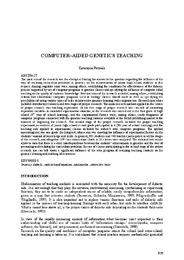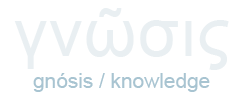Computer–aided genetics teaching

View/
Date
2003Author
Potyrala, KatarzynaPublisher
Department of Educational Sciences, University of CyprusPlace of publication
CY - ΛευκωσίαSource
CBLIS Conference Proceedings 2003 Volume I: New Technologies and their applications in educationGoogle Scholar check
Keyword(s):
Metadata
Show full item recordAbstract
The main aim of the research was the attempt at finding the answer to the question regarding the influence of the way of realizing curriculum problems in genetics on the achievements of junior high school students in this respect. Among cognitive aims were, among others, establishing the conditions for effectiveness of the didactic process supported by use of computer programs at genetics classes and specifying the influence of computer aided teaching on the quality of students’ knowledge. Practical aims of the research included, among others, establishing criteria that educational computer programs used at biology classes should meet as well as specifying the possibilities of using various types of tasks in interactive genetics learning with computer use. Research procedure included introductory research and two stages of proper research. The main research method applied in the course of proper research was teaching experiment. At the first stage of proper research one can talk of measuring
dependent variables in simulated experimental situation, as the research was carried out in the first grade of high school (9th year of school learning), and the experimental factors were, among others, ready fragments of computer programs connected with the genetics teaching contents available at the Polish publishing market at the moment of beginning the research. The second stage of the proper research included the proper teaching experiment, as students of junior high school second grade participated in it (9th year of school learning), and the teaching aids applied in experimental classes included the author’s own computer programs. The applied measuring tool was one-grade checking test, whose aim was showing the influence of experimental factors on thestudents’ amount of knowledge and skills. In general, 984 students and 448 teachers participated in all the stages of the research, and altogether 379 class observation charts in 31 classes were analyzed. The obtained test results allow to state that there is a strict interdependence between the students’ achievements in genetics and the way of presenting and realizing the curriculum problems. In case of classes participating in the second stage of the proper research one can talk about a significant influence of the own program of realizing teaching contents on the genetics learning and teaching effectiveness.
